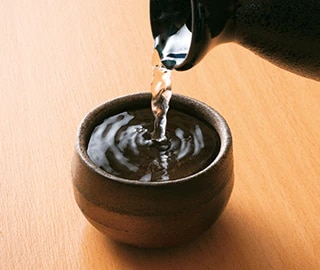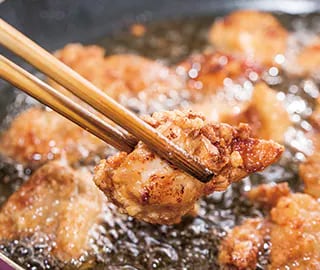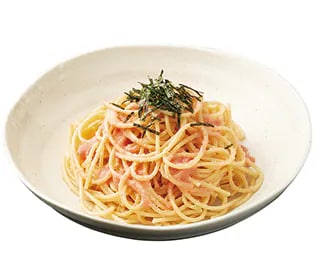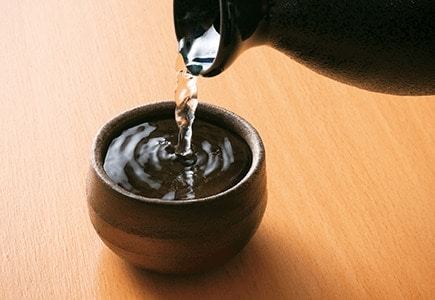
There are some 1,400 sake breweries in Japan today, ranging from large-scale companies to small artisanal makers, and together, they produce over 10,000 brands of sake. This number reflects the country’s many regions that boast the essential ingredients needed to brew superior sake: pure spring water, outstanding locally grown sake rice, and special koji (Aspergillus oryzae). Sake is brewed by adding koji mold to steamed rice, resulting in a fermentation process that converts the rice starch to sugar. Moto yeast, also known as shubo, or “mother of sake,” is added to induce alcoholic fermentation of the sugar. Carefully controlled, this simultaneous and complex process produces sake—and it is unique in the world. Every region has its own distinctive brands or types of sake, but the prefectures of Hyogo, Kyoto and Niigata are considered Japan’s predominant sake-brewing areas.
Sake is made using only three basic ingredients: rice, rice koji and water. Successful sake production revolves around the precision and skill of an experienced chief brewer called the toji, who directs the entire process, scrutinizing not only each ingredient, but subtle environmental variations such as temperature. It takes time to become an experienced toji, and as Japan’s population ages, the number of toji are declining. Nowadays, the owners of breweries are increasingly taking on this task themselves.
Sake is made from rice, koji and water
Sake has long been linked to the worship of deities in Japan. Omiwa Shrine in Nara Prefecture enshrines a deity of sake, and on November 14 of each year, the shrine hangs a ball made of green cedar leaves in its honor. Traditionally, upon producing a new batch of sake, brewers suspend such a ball, called sugitama or sakabayashi, under the eaves of their stores. A similar tradition is seen in Europe, where a tree branch is hung when a new batch of wine is produced.
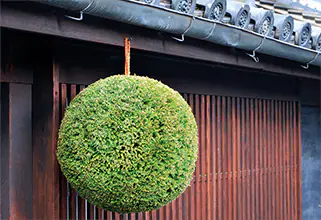
With the growth of tourism in Japan, organized tours have sprung up to introduce visitors to local sake breweries. Also popular are sakagura biraki events, where breweries hold an annual open house with behind-the-scenes tours and tastings to celebrate the annual production of their new sake. More specialized tours involve introducing sake-lovers to sake tastings at various izakaya Japanese-style pubs.

